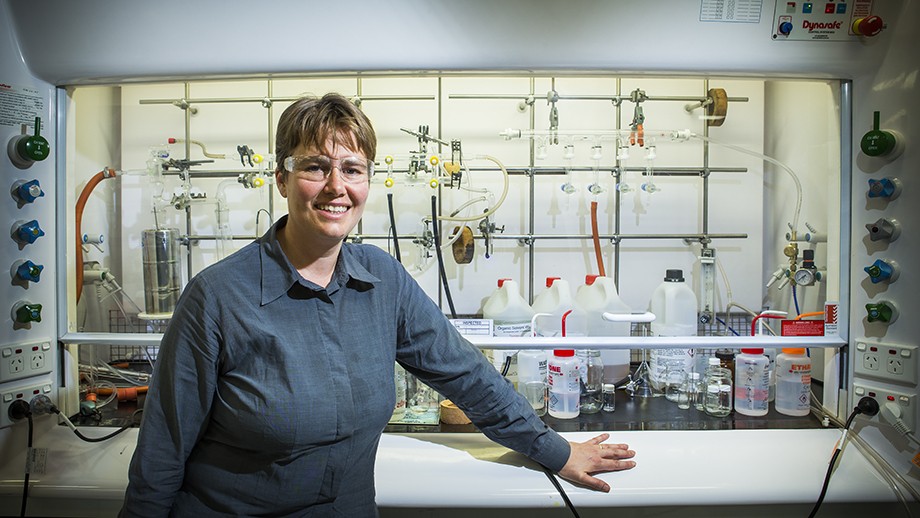A fresh coat of paint
Professor Michelle Coote wants to know how you like your polymers. If you could have a synthetic material with any properties you like, what would they be?
Take, for instance, her self-healing paint. This might sound like science fiction. But it isn’t.
“If you scratched the paint on your car, you could trigger this self-healing and the paint would just grow back again,” she explains.
Professor Coote, from the ANU Research School of Chemistry is engineering polymers with extraordinarily specific properties.
“At one temperature the bonds form and at another temperature they fall apart. So we had to work out what types of bonds were needed for the self-healing behaviour to occur at a particular temperature.”
So the paint will self-heal, but it won’t run off your car on a hot summer’s day.
Until recently, designing polymers with such precision would have been unthinkable. But advances in computing have made it possible to create simulations what would normally occur in a laboratory. Professor Coote relies on Raijin—a supercomputer on ANU campus—to simulate thousands of chemical reactions.
“We use software to simulate the energetics of chemical reactions. The computer doesn’t care if you’re studying a biological system, a polymer, or some small molecule,” Professor Coote explains.
“Using models, we can predict whether the reaction would go forwards or backwards as a function of temperature. We can compare the data across different reactions and decide which polymer is best for a given application.”
The technology has applications that reach far wider than self-healing paint.
“What’s really interesting is 3D printing. Imagine you have a material that is liquid enough to print at a high temperature. And as the temperature cools, the material solidifies.
“When you decide you want something else, you can stick it back in your 3D printer, heat it up, and print something completely different.”
The benefits are many.
“Here is a material you can recycle indefinitely. But it’s recyclable in a way that doesn’t rely on you melting and remolding. It’s un-reacting and re-reacting, so it’s cleaner.”
Michelle’s research also investigates the different ways that self-healing can be triggered.
“One of our hopes is to design some polymers where you apply an electric field to trigger self-healing. That would be really simple.
“You could use it in cases where you couldn’t use light. Or in places where you didn’t want high temperatures for other reasons.”
For Professor Coote, self-healing paint and printed liquids are just the beginning. So when she asks you how you want your polymers, make sure you dream big. Who knows what her next polymers will do?

